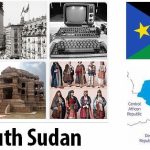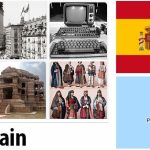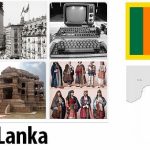Afghanistan is an independent nation in Southern Asia. With the capital city of Kabul, Afghanistan 2020 population is estimated at 38,928,357 according to countryaah. The location in the middle of the highways between major Asian cultural areas has characterized Afghanistan’s history. The pressure from foreign invaders has sometimes tore the country apart, sometimes helped to unite it. In modern times, first, Britain, later the Soviet Union and the United States have had a great influence on Afghan politics.
- AbbreviationFinder.org: Comprehensive guide to and popular abbreviations of Afghanistan, covering history, economy, and social conditions.
In the 300s BC, Afghanistan became a province in the empire of Alexander the Great. In the 6th century AD, the Arabs came with Islam. The Turkish ghaznavid family created around 1000 a kingdom that extended to India. In the 13th and 13th centuries, the country was invaded by Mongols under the leadership of Djingi’s Khan and Timur Lenk. For Afghanistan political system, please check carswers.
Afghanistan remained a scene of war for Persians, Turks and Mongols. The Persian ruler Nadir Shah defeated the Mongols in 1739. After his death in 1747, his Afghan bodyguard Ahmed Shah was proclaimed king. He is considered the country’s founder and his family, Durrani, ruled Afghanistan until 1978.
Ahmed Shah’s kingdom was shattered after his death by civil war and war of succession. During this period of weakness, the country was invaded by British forces in 1839, which sought to subdue Afghanistan to stop the expansion of Russian tsarism through Central Asia. The British fought back in 1842 and King Dost Mohammed succeeded in reuniting the country in the 1860s.
The British are attacking
In 1878, the British made another attempt to invade Afghanistan. They gained control of areas that today belong to Pakistan but were driven out in 1880 by Abdur Rahman, who was then crowned king. During his reign, the country got its current borders, including the so-called Durand Line against British India (today Pakistan) that cuts right through the territory of the Pashtuns (see Foreign Policy and Defense). The British retained an influence on foreign policy, but Abdur Rahman still managed to balance British and Russian interests. During his time, Afghanistan was added to the Wakhan Corridor in the northeast to keep the two empires apart.
Abdur Rahman was the country’s first modern nation builder. He was succeeded by son Habibullah and grandson Amanullah. The latter broke with the British in 1919 and triggered a third war, which ended with Afghanistan’s borders becoming internationally recognized.
Under Amanullah, Afghanistan got its first constitution and a modern, non-religious judiciary. After a visit to Europe, the king tried to introduce Western clothing and remove the women’s veils. Religious leaders fueled dissatisfaction with the reforms of conservative clans and Amanullah was driven into exile in 1929.
After an armed struggle for a time, Mohammad Zahir Shah ascended the king’s throne in 1933 after his father, Nadir Shah (king 1929-1933), was assassinated. Zahir Shah ran a cautious reform line and kept the country on an alliance-free course.
The Communists take over
In 1953, the king appointed his cousin Mohammad Daoud as prime minister. He accelerated modernization and economic development, largely with Soviet assistance.
Daoud resigned in 1963, followed by a period of some democratization – including the introduction of a female right to vote in the 1965 parliamentary elections – but also of instability and weak governments. During this time, the Communist People’s Democratic Party (known as the English abbreviation PDPA) was formed.
After growing up and famine in the early 1970s, Daoud regained power in 1973. He overthrew the king and proclaimed president. With dictatorial methods he tried to develop the country but fought with both the left and the right and was assassinated in April 1978 in a bloody military coup that brought the Communist Party to power. PDPA leader Nur Mohammad Taraki was named president.
The party tied the country near the Soviet Union through a friendship and cooperation agreement. The government tried to implement rapid land reform and a literacy campaign with British methods, but came into conflict with traditional clan leaders and conservative Islamic groups. Armed resistance erupted in several provinces.
President Taraki was overthrown in September 1979 by Prime Minister Hafizullah Amin. Concerned by the weakening regime, the Soviet Union invaded Afghanistan in December of that year. Amin was killed in a Soviet military attack and Babrak Karmal, who led a rival party faction, was made president. But instead of easily shattering the divided resistance forces, the Soviet Union was drawn into a protracted war. Soon, the invasion force was up in over 100,000 men.
Soviet invasion…
The war caused an enormous suffering for the population. Many millions of Afghans fled to Pakistan, Iran or inland. When guerrillas received modern weapons from mainly the US and China, financial support from Saudi Arabia and organizational assistance from Pakistan’s military intelligence service, the regime became increasingly isolated in the cities. Large parts of the countryside were devastated. Harvests were burned, land mined and irrigation systems destroyed.
Following Michail Gorbachev’s entry into power in the Soviet Union, Babrak Karmal was replaced in 1986 by Mohammad Najibullah Ahmedzai, who sought to give the regime a more attractive facade. Land reform was abolished almost entirely and in the spring of 1988, parliamentary elections were held, but boycotted by the guerrillas.
The guerrillas were also divided. Seven Sunni movements headquartered in Peshawar, Pakistan, had a loose and conflicting cooperation and in Iran eight small Shiite groups formed an alliance.
UN-led indirect peace talks between Afghanistan and Pakistan led to a Soviet retreat agreement in 1988. The United States and the Soviet Union would guarantee Afghanistan’s independence and the refugees would be allowed to return home.
… and retreat
The Soviet retreat ended on February 15, 1989. During just over nine years of war, about 15,000 Soviet soldiers had fallen. However, the expected fall of the Najibullah regime was delayed until Soviet arms deliveries were interrupted at the turn of the year 1991-1992. The collapse occurred after a communist-installed Uzbek militia in the north, led by General Rashid Dostum, switched sides and began to collaborate with the guerrilla that Tajik Ahmed Shah Massoud built up in the northeast. When Massoud’s and Dostum’s forces entered Kabul on April 25, 1992, the regime surrendered without resistance, after Najibullah resigned a few days earlier and sought protection in a UN office. A Provisional Islamic Government was formed by the Peshawar-based Sunni Maritime Alliance.
2009
December
The United States is reinforcing the troops
US President Obama orders an additional 30,000 US soldiers to be sent to Afghanistan, but at the same time says a troop retreat will begin in 2011.
August
Contested presidential election
Presidential elections are conducted under accusations of gross fraud. It was not until November that Hamid Karzai was declared the winner, after the challenger Abdullah Abdullah resigned from the second round, citing unfair terms. Karzai’s reputation in the outside world is severely weakened and his allies are demanding force against corruption.
May
The United States General takes command
US General Stanley McChrystal is given command of all foreign forces, including the Swedish now numbering about 500 men. The US Department of Defense admits that the serious situation requires new thinking.
March
The US is building up the army and the police
President Obama announces a new strategy: increased efforts on the Afghan army and the police to be intervened with more measures to strengthen civil society.
February
More soldiers to Afghanistan
The United States and up to 20 other NATO countries promise troops reinforcement to Afghanistan. The US increases its strength by 17,000 men.









